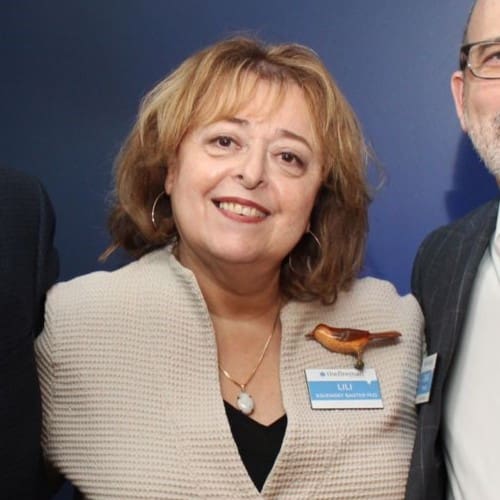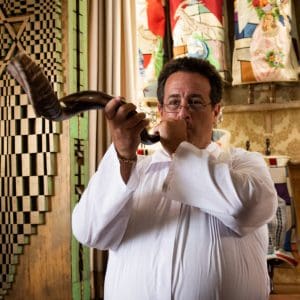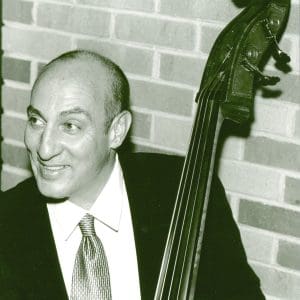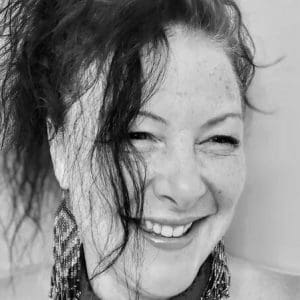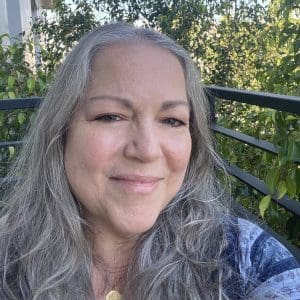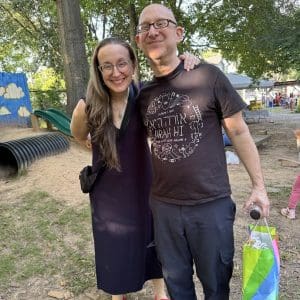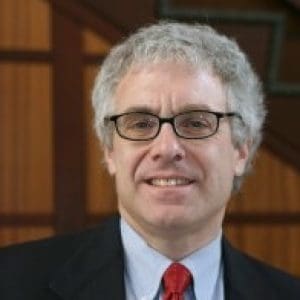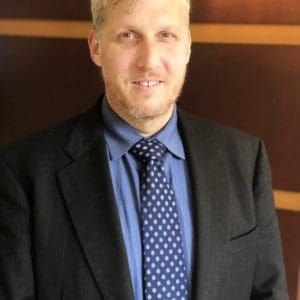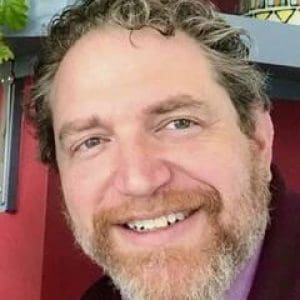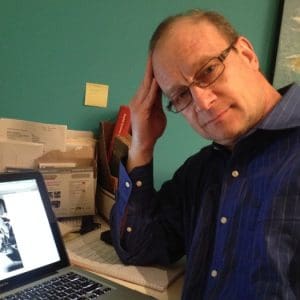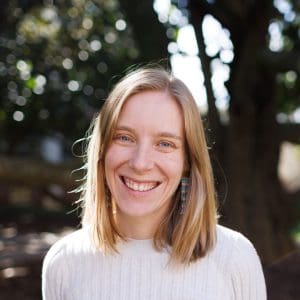God Reached Out at the Vatican
Sabbatical Column #5
By Rabbi Neil Sandler
March 11, 2017
13 Adar 5777
 I looked up. There it was…Michelangelo's "Creation of Adam" at the center of the ceiling in the Vatican's Sistine Chapel. Wow, what a great way to begin our week in Italy! "Wow" was a feeling that often came over me during those seven days. Practically every street in the three cities we visited, Rome, Florence and Venice, revealed something magnificent. Museums strained my ability to recognize the "wow" of this space as room after room was filled from top to bottom with the incredible. The Sistine Chapel was the best example of this esthetic over stimulation. But I walked away from it, and more specifically from its most famous painting, with a reaffirmation of a spiritual truth. In Torah terms, how was the first human created? The Torah itself isn't very interested in that question. In philosophical terms, some say (and suggest the Torah implies) that the human being was part of creation ex nihilo…creation from nothing. Others suggests that Adam's name tells us about his origins…from "adamah," the earth itself. But Michelangelo had a different idea.
I looked up. There it was…Michelangelo's "Creation of Adam" at the center of the ceiling in the Vatican's Sistine Chapel. Wow, what a great way to begin our week in Italy! "Wow" was a feeling that often came over me during those seven days. Practically every street in the three cities we visited, Rome, Florence and Venice, revealed something magnificent. Museums strained my ability to recognize the "wow" of this space as room after room was filled from top to bottom with the incredible. The Sistine Chapel was the best example of this esthetic over stimulation. But I walked away from it, and more specifically from its most famous painting, with a reaffirmation of a spiritual truth. In Torah terms, how was the first human created? The Torah itself isn't very interested in that question. In philosophical terms, some say (and suggest the Torah implies) that the human being was part of creation ex nihilo…creation from nothing. Others suggests that Adam's name tells us about his origins…from "adamah," the earth itself. But Michelangelo had a different idea.
The "Creation of Adam" in the Vatican's Sistine Chapel doesn't depict the physical appearance of something that was not present prior to that moment. To Michelangelo, it is appears that Adam did exist prior to the moment that God "created" him. Look at Adam in the painting. He appears to be lethargic and without an animating spirit. Adam existed; but he was not fully alive…not yet a human being. What did it mean to Michelangelo to "create" the first human being? How did God fashion this pinnacle of Creation? It meant that God "touched" Adam. It meant that God infused this being with the divine spirit, an expression of Genesis 1:26 – "Let us make the human being in our image, after our likeness…" It meant that this "touch" was the moment of genuine creation of the human being.
The artist's brush shared more than its colors and forms.
Michelangelo was known for his outstanding expertise as a painter, sculptor and architect. Two weeks ago in Rome, I discovered that he was also a creative darshan, one who brought his interpretive understanding of Torah and its truth to all of us and to the rest of the world.
—
This column will likely be the final one I write while I am on sabbatical. The weeks have flown by, and I will soon resume my regular responsibilities in our congregation. On Shabbat morning, April 1, I plan to speak about my sabbatical during our service. At 12:45 p.m. that day I will offer a Post Kiddush Bet Midrash on the topic, "Israel the Dream and Israel the Reality: The Challenge to Integrate Both in Our Lives." In earlier columns I have hinted at some experiences during my month in Israel that troubled me. For all the wonder that is still Israel, today Israel is also a place that deeply disturbs many Jews who are committed to its well-being. What can we do with these conflicting feelings? I hope you will join me for a challenging, yet necessary, conversation.
I want to thank all of you and especially our congregation's leadership for affording me the opportunity of this sabbatical experience. I have enjoyed myself. I have studied in a manner that renewed my spirit, and I have stepped back from the harried pace of my life in ways I hope will continue to impact my rabbinate in positive ways. All in all, I don't think I could have designed a better sabbatical than the one I have enjoyed. Thank you so much!
A Reflection from Outside the Land
Sabbatical Column #4
By Rabbi Neil Sandler
February 20, 2017
24 Shevat 5777
I may have grown up in Minnesota, but the coldest I have ever felt was in the Sinai desert. Just over forty years ago, when I participated in the Hebrew University Junior Year Abroad program, all of the students took a bus trip to the Sinai. We camped out one night, the coldest of my life, and began our trek up the mountain about 3:00 am. Our objective was to arrive at its peak just prior to daylight. The mountain was "Gebal Musa," "Mt. Moses." In Jewish tradition, we call this place "Mt. Sinai."
While the Book of Exodus account of the giving of Torah is not history per se, I have always believed, as a statement of faith, that the description of revelation at Mt. Sinai which we read this past Shabbat in Parshat Yitro represented a unique moment. At Mt. Sinai, the Holy One shared God's self with Moses and the Israelites in a manner never repeated. I believe that divine revelation continues, but not in a manner that compares with Ma'amad Har Sinai as described in the Torah.
It was with this belief that I stood atop Mt. Sinai over forty years ago. A sense of awe was palpable. "Ma norah hamakom hazeh," how wondrous was this place! I looked out as a brilliant sun rose, and I let my imagination travel back to the moment described in the Book of Exodus. I looked to the northeast and thought about the Land to which the Israelites would journey to fully live out Torah. I thought about Moses then…
…And I thought about Moses again last week. I thought about Moses because Susan and I traveled to Jordan and stood atop Mt. Nebo, the place from which, the Torah informs us, Moses saw the Land he would not enter. For the first time I saw Israel from the east looking west toward the Mediterranean Sea. This time when I looked out over the panoramic view that unfolded before me I could actually see Israel…Jericho and the Dead Sea.
What did Moses see when he ascended Mt. Nebo? After an arduous forty year journey through the Sinai desert, up through what is today Jordan and standing as close as he would ever come to entering the Promised Land, what did he see for his people? What were his hopes and dreams for them?
To me, in a manner I have yet to fully grasp, there is significance in knowing that I stood on two mountain tops, arguably the most important places Moses ever stood, forty years apart from each other…precisely the same amount of time that separated Moses standing on those mountain tops. Of course, that fact is just a coincidence, but for me it has spiritual and substantive significance.
At Mt. Nebo I reflected on my hopes and dreams for this people, my people, that dwells in the Land today. To be honest, I have been deeply disturbed during this month in Israel, as I read about and personally witnessed some things happening here. It shouldn't be this way in a Jewish State that is fully informed by Jewish values. But it is. That thought troubles me.
But as I stood on Mt. Nebo and saw as much of the Land and State of Israel as that cloudy day would allow, I still stood in awe…and not just because of the place where I was standing. I stood in awe because I also thought about all that the State of Israel has accomplished in less than seventy years, all that it contributes to the world today and all that it continues to mean to many Jews.
Yes, Israel today troubles me in profound ways, but to me, Israel is still a place of unceasing wonder.














